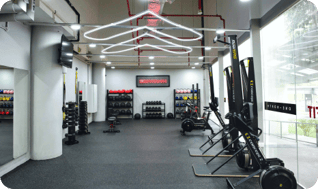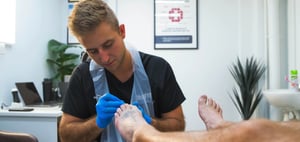
Ingrown Toenail Treatment
Mild cases may exhibit:
- Pain, tenderness, redness,
- Swelling along the edge of the toenail
- Discomfort when wearing shoes
In more severe instances, symptoms escalate to include:
- Increased pain, swelling
- The presence of pus or drainage, indicating infection
- Bleeding and difficulty moving the toe
- Localized warmth may also occur
Ingrown toenails can develop from:
- Improper footwear (tight shoes)
- Incorrect nail trimming (cutting too short or rounded)
- Toe trauma (e.g. stubbing, dropping objects)
- Naturally curved toenails
- Poor foot hygiene (moisture buildup)
- Activities with repetitive toe pressure (e.g. ballet, soccer, etc.)
- Foot deformities (e.g. bunions, flat feet)
What is an Ingrown Toenail?
An ingrown toenail occurs when the edge or corner of a toenail grows into the surrounding skin, causing pain, swelling, and sometimes infection. This condition can result from various factors such as improper nail trimming, wearing tight shoes, injury, or genetic predisposition. Ingrown toenails are common, particularly in the big toes, and can cause discomfort and difficulty with walking or wearing shoes.
While anyone can develop an ingrown toenail, certain groups may find themselves more susceptible, including adolescents and athletes due to activity levels or specific footwear. Individuals with conditions such as diabetes, poor circulation, or existing nerve concerns in their feet should be particularly mindful, as an ingrown toenail can present greater potential issues and often requires a specific treatment approach.
For most healthy individuals, it's a manageable condition, but understanding what an ingrown toenail is and its potential causes is the first step toward effective management and prevention.
Symptoms of Ingrown Toenail
Recognising the signs of an ingrown toenail can help in seeking timely attention. Symptoms can range from mild discomfort to indicators of potential infection. Seeking prompt medical attention for severe symptoms or signs of infection is crucial to prevent complications.As the condition progresses, both the level of pain and the extent of swelling may noticeably increase.
Symptoms of Ingrown Toenail
Pain, Redness, & Tenderness
The skin alongside the nail may become sore, red, and sensitive to touch, especially when pressure is applied.
Swelling Along the Toenail Edge
Inflammation can cause the skin bordering the nail to appear puffy or swollen, adding to the discomfort.
Discomfort When Wearing Shoes
Pressure from footwear can significantly worsen the pain and tenderness associated with an ingrown toenail.
Increased Pain & Swelling
As the condition progresses, both the level of pain and the extent of swelling may noticeably increase.
Pus or Drainage (Infection)
The presence of yellow or white pus, or other drainage, may suggest that an infection has developed.
Bleeding & Difficulty Moving the Toe
In some cases, the affected area may bleed easily, and significant pain might make toe movement difficult.
Localised Warmth
The skin around the ingrown toenail might feel warmer than surrounding areas, often associated with inflammation or infection.
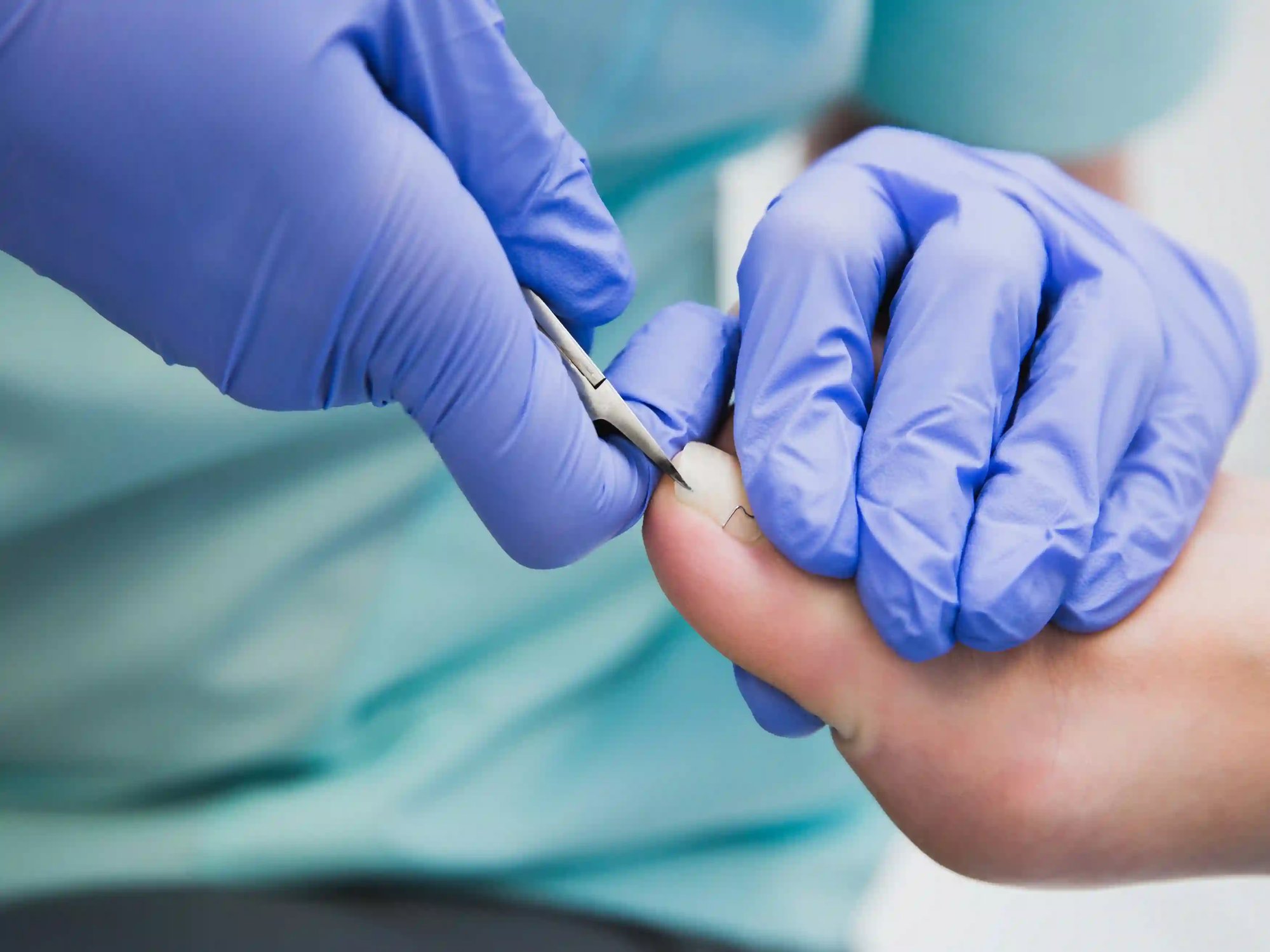
Causes of Ingrown Toenail
Causes of Ingrown Toenail
Improper Footwear
Shoes that are too tight or narrow constrict the toes, pushing the nail edge into the surrounding skin.
Incorrect Nail Trimming
Cutting toenails too short or rounding the edges can encourage the nail to grow improperly into the skin.
Toe Trauma
Injuries like stubbing your toe or dropping something heavy on it can damage the nail and trigger ingrowth.
Naturally Curved Toenails
Some individuals have toenails with a pronounced curve (involuted nails), making them more prone to growing inwards.
Poor Foot Hygiene
Excessive moisture and inadequate cleaning can soften the skin, making it easier for the nail to penetrate.
Repetitive Toe Pressure from Activities
Sports like running or ballet involve repeated pressure on the toes, increasing the risk of ingrown nails.
Foot Deformities
Structural issues such as bunions or flat feet can alter foot mechanics and contribute to increased pressure on toes.
Our Approach to Ingrown Nail Treatment
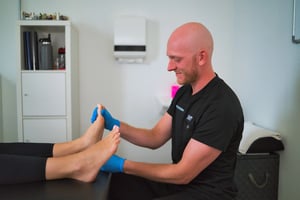
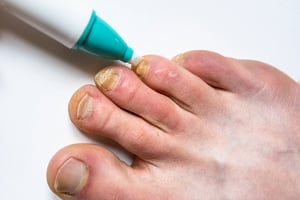
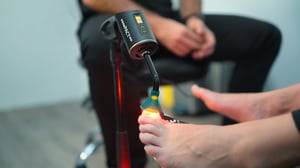
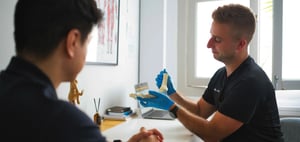
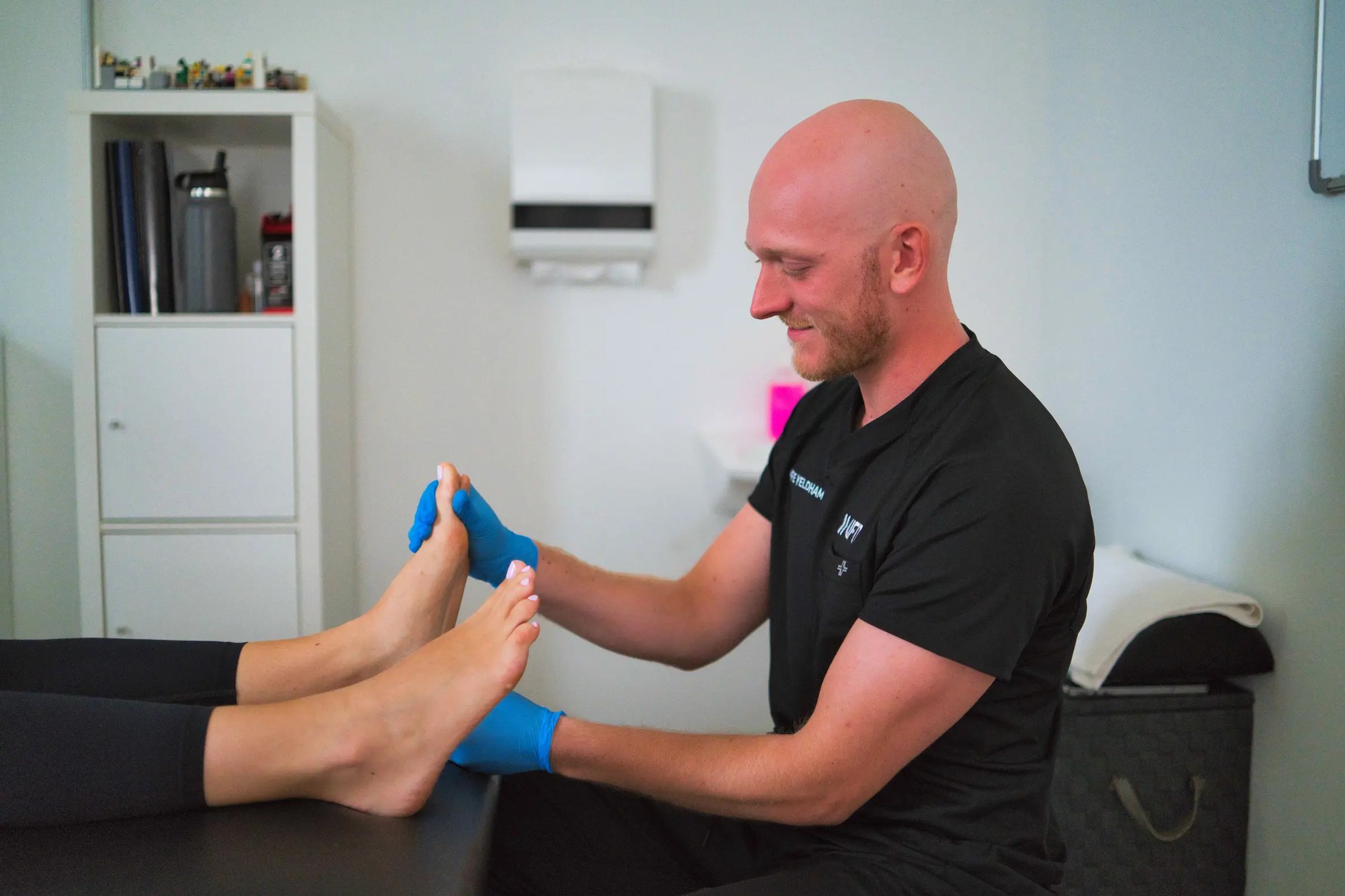
Step 1: Thorough Assessment
Our podiatrist will examine your ingrown toenail, discuss your symptoms, and review your medical history. A thorough evaluation will help us understand the severity and underlying causes of your condition, allowing us to tailor an effective and appropriate treatment plan specifically for you, ensuring all contributing factors are considered.
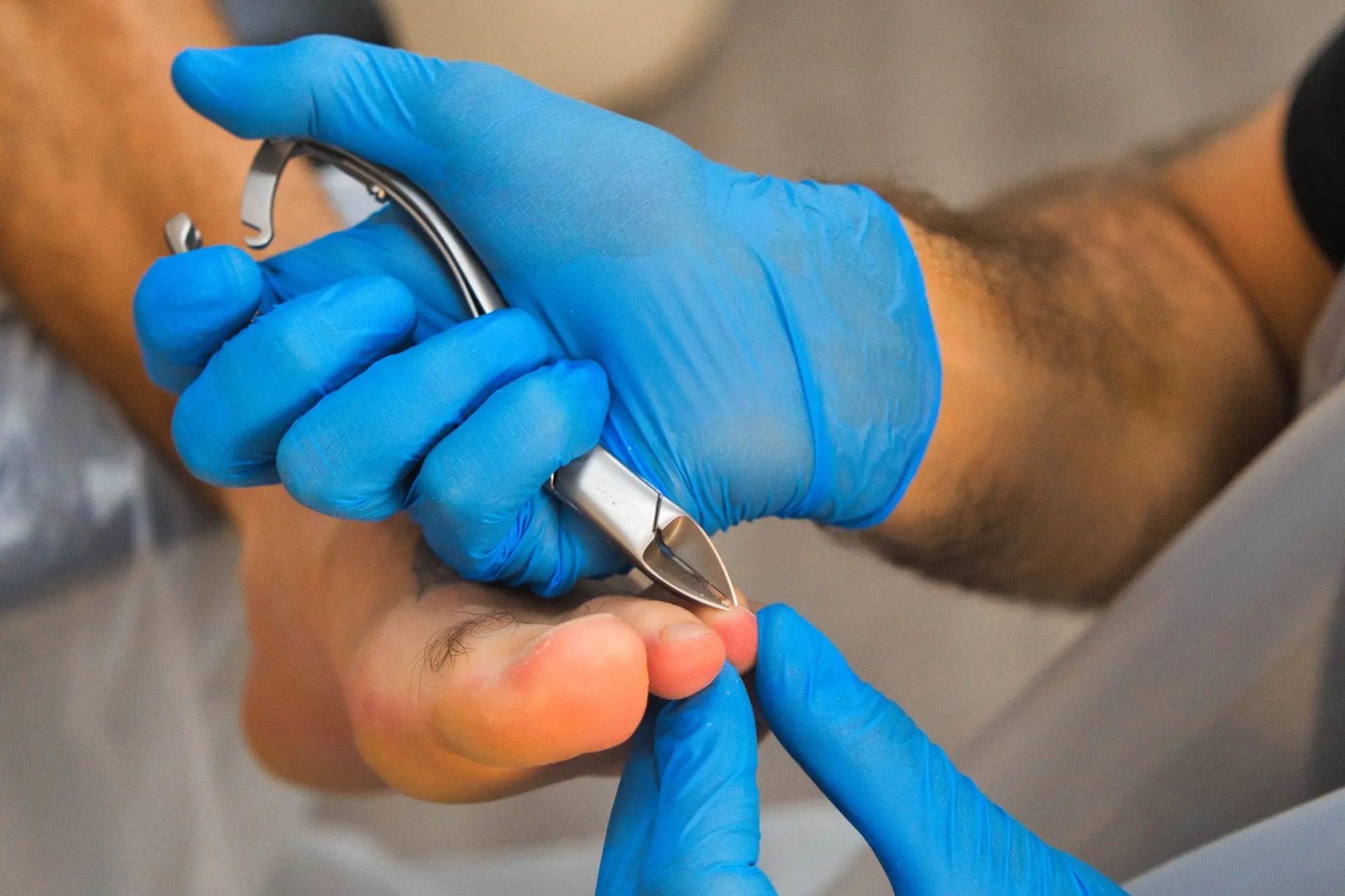
Step 2: Routine Care and Foot Hygiene
For a mildly ingrown toenail characterised by redness and pain without pus, our podiatrist might recommend professional nail trimming and filing to prevent them from digging into the surround skin. However, this is typically a temporary solution, as patients may require monthly maintenance to prevent the condition from worsening. We will also provide education on proper foot hygiene and footwear choices to help manage the condition and support your ongoing foot health.
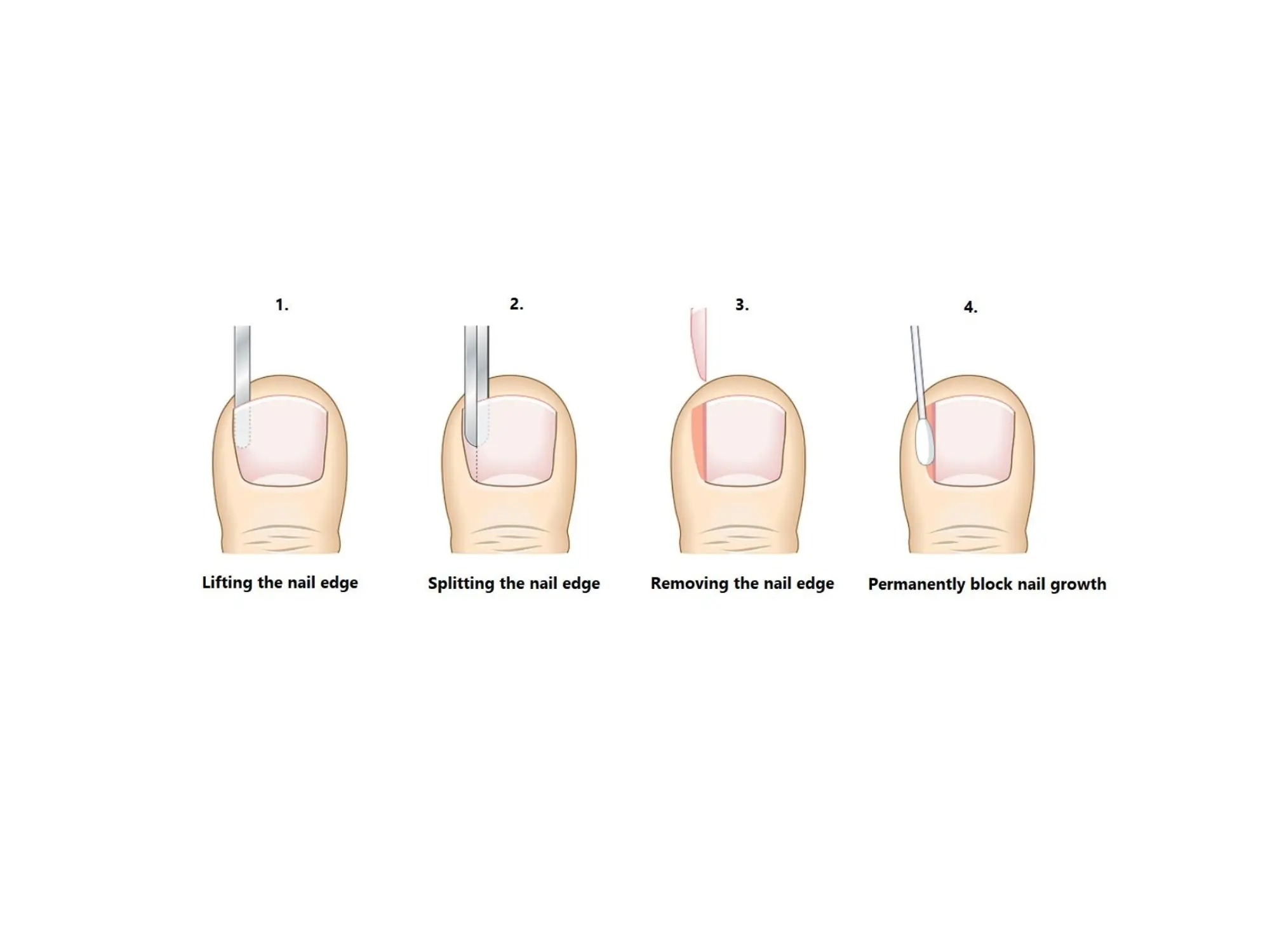
Step 3: Partail Nail Avulsion
For recurrent or more significant ingrown toenail issues, a partial nail avulsion might be recommended. This is a minimally invasive surgical procedure performed under local anesthesia, and involves the problematic section of the nail, aiming to reduce the likelihood of the nail growing back into the skin.
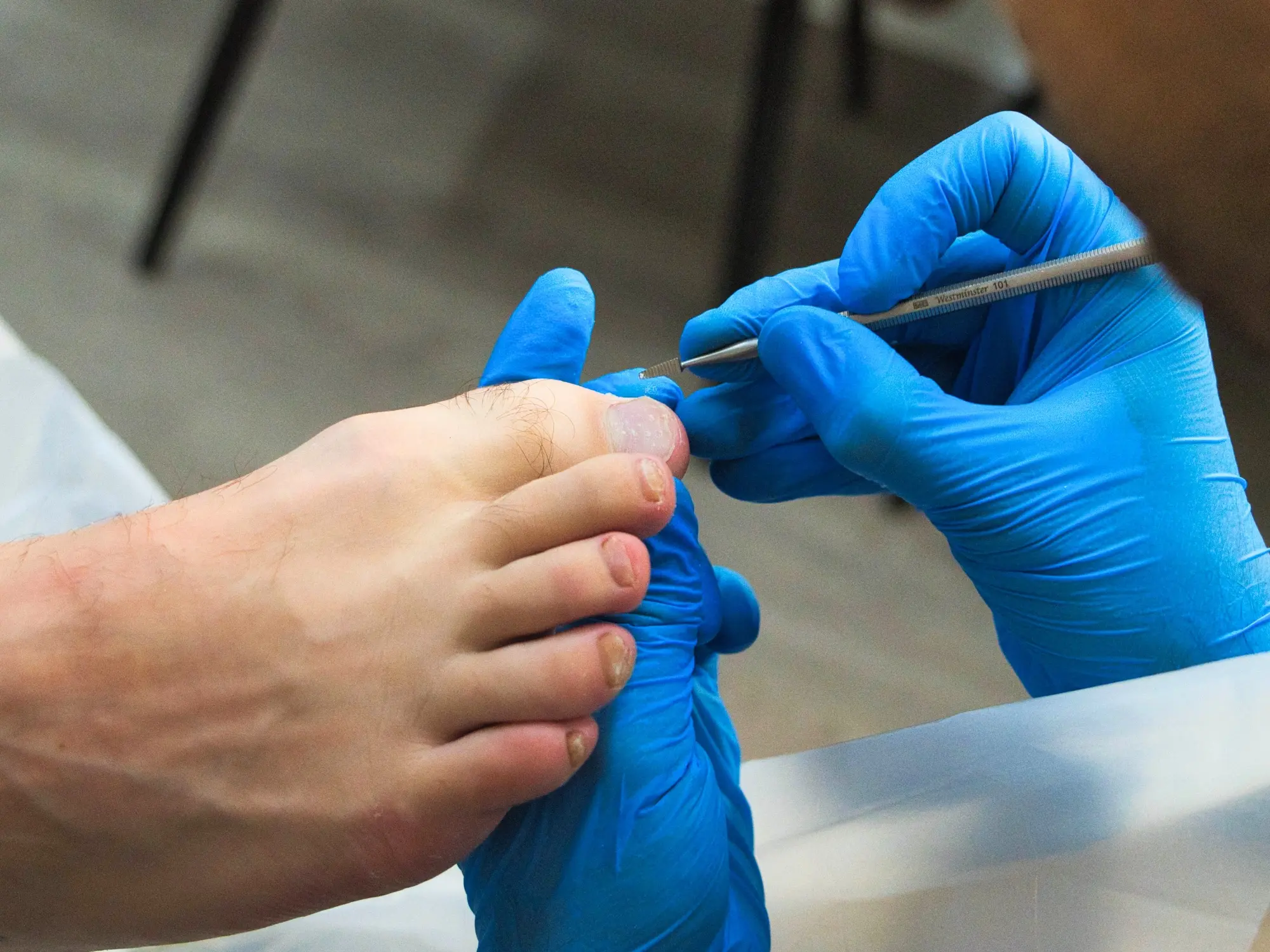
Step 4: Post-Treatment Care & Follow-up
Following any procedure, we provide detailed guidance on wound care and advise on activity levels to support your recovery. Follow-up appointments allow us to monitor your healing progress and address any concerns.
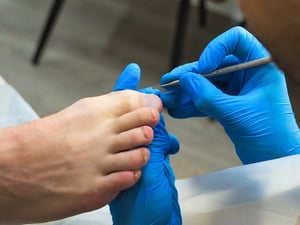

Routine Care
For a mildly ingrown toenail characterized by redness and pain without pus, your healthcare provider may perform routine care, which involves trimming the nail and carefully filing the ingrown corners to prevent them from digging into the surrounding skin. However, this is typically a temporary solution, as patients may require monthly maintenance to prevent the condition from worsening.
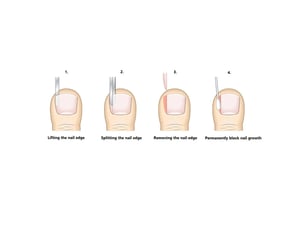

Partail Nail Avulsion
This is a minimally invasive surgical procedure performed under local anesthesia. It is the best treatment for recurrent ingrown toenails as it addresses the underlying issue, providing a permanent solution and immediate relief from pain and discomfort and inflammation.
The procedure involves removing a portion of the nail, including the ingrown section and sometimes a small portion of the nail matrix, preventing the nail growing back.
Partial nail avulsion procedure requires no stitches and leaves minimal scarring. You'll experience a swift recovery (under 2 weeks) and can quickly return to your daily activities. Plus, the procedure boasts a low recurrence rate (2-5%) and delivers aesthetically pleasing results.
Ingrown Nail Management & Prevention Tips
Wear Properly Fitting Footwear
Ensure your shoes offer ample space, especially in the toe box. A general guideline is to have about a thumb's width between your longest toe and the end of the shoe. This prevents undue pressure on your nails. Choose footwear that suits your activity and provides adequate support without squeezing your toes.
Trim Nails Correctly & Regularly
Adopt proper nail-cutting techniques. It’s often helpful to trim your nails after a bath or shower when they are slightly softened. Use clean nail trimmers and cut straight across – avoid rounding the corners or cutting them too short. Don’t dig into the sides, and gently file any sharp edges. Avoid plucking or tearing your nails.
Practice Good Foot Hygiene
Maintaining clean and dry feet is fundamental. Wash your feet regularly and dry them thoroughly, especially between the toes. Routinely inspect your feet and nails for any changes in appearance. While keeping feet clean is important, try to avoid prolonged soaking, particularly in very hot water, as it can affect skin integrity.
Avoid Tight or Narrow Shoes
Shoes that are too tight or narrow, especially those with pointed toes, can compress your toes and force the nails to grow into the surrounding skin. Consistently choosing shoes that respect the natural shape of your foot can significantly reduce the risk of developing a painful ingrown toenail.
Protect Toes from Injury
Be mindful of activities that could cause trauma to your toes. Repetitive pressure, such as from certain sports, or accidental impacts like stubbing your toe, can contribute to ingrown nails. Wearing appropriate protective footwear during sports or work can help minimise these risks.
Consult a Podiatrist for Persistent Issues
These tips can help with prevention, but they don't replace professional care. If you experience persistent pain, signs of infection (like redness, swelling, or pus), or if your ingrown toenail frequently returns, it's important to consult a podiatrist. Our podiatry clinic in Singapore can provide a thorough assessment and discuss appropriate treatment options, which may range from conservative care to minor removal procedures for lasting relief.
Why Choose UFIT Podiatry?
At UFIT, we are dedicated to providing our patients with the highest level of care. We go beyond a regular podiatry clinic, using advanced biomechanical and movement assessments to create personliased treatment plans that will help take you from injury, to optimising health, all the way to performance.
Our commitment extends beyond addressing injuries or pain – our comprehensive range of services are tailored for injury prevention, prehabilitation, rehabilitation, and performance optimization in sports and everyday life. So whether you are an athlete, active individual, or a parent seeking specialized lower limb health for your child, our commitment to personalized, evidence-based care and innovative technologies ensures transformative outcomes.
ALL INDIVIDUALS
ALL INDIVIDUALS
We offer personalized, evidence-based lower limb care for athletes, active individuals, and parents seeking specialized treatment for their children.
We go beyond addressing your injury or pain. Through our Circle of Care, you can access our team of experts with a vast range of specialised experience and knowledge.
Meet Our Podiatry Team

Lewis Nurney
Lewis is a highly experienced podiatrist with over 5 years of practice in Singapore, bringing his expertise to UFIT's comprehensive Circle of Care. As Head of Podiatry at UFIT Club Street, he specialises in sports podiatry, innovative orthotics for adults and children (including 3D-printed custom insoles, Paediatric AFOs and SMOs for pediatric flat feet), and minimally invasive procedures.
A first-class honours graduate from the University of Huddersfield (UK), Lewis holds dual certifications in Extracorporeal Shockwave Therapy (ESWT), Diagnostic Ultrasound and Running Gait analysis. Previously with East Coast Podiatry, he now provides patient-centred care at UFIT, specialising in non-surgical management of conditions like Foot Pain, Plantar Fasciitis and Achilles Tendinopathy in both children and adults, ultimately focused on alleviating discomfort and restoring optimal foot function.

Elliot Yeldham
Elliott is a dedicated podiatrist with over 7 years of healthcare experience, gained in both the UK's National Health Service (NHS) and private practice. He holds an Honours degree in Podiatry from Cardiff Metropolitan University (Wales), and brings a wealth of expertise to Singapore.
Specialising in Musculoskeletal (MSK) podiatry, Elliott's interests include sport podiatry and the management of gait abnormalities in both adults and children. He is also recognised for his skill and patient-focused approach in minimally invasive procedures for ingrown toenails and wart removal. Committed to a patient-centred and multidisciplinary model, Elliott actively stays informed of the latest healthcare advancements through clinical research and international conferences.
Book Your Ingrown Nail Treatment Now
Visit Our Podiatry Clinic
21 Club St, #01-01
Singapore 069410
+65 6225 5059
podiatry@ufit.com.sg
View on Google Maps
Trusted by Global & Local Podiatry Associations



Frequently Asked Questions about Ingrown Toenail
Podiatry Blog
Check out the podiatry articles on our blog, written by our very own experts!

.png?width=301&height=187&name=Website%20Navigation%20Images%20(3).png)

-1.jpg?width=1984&height=1196&name=UFIT%20Club%20Street%20Front%20(4)-1.jpg)


